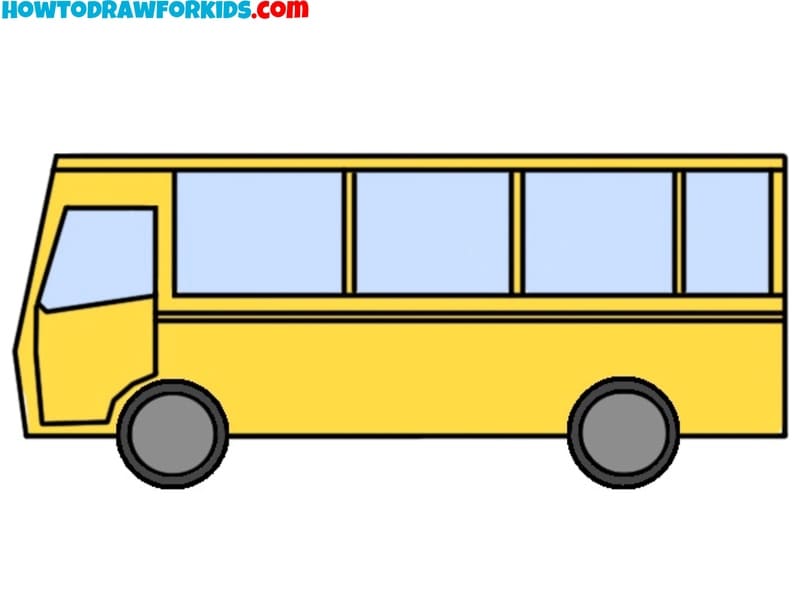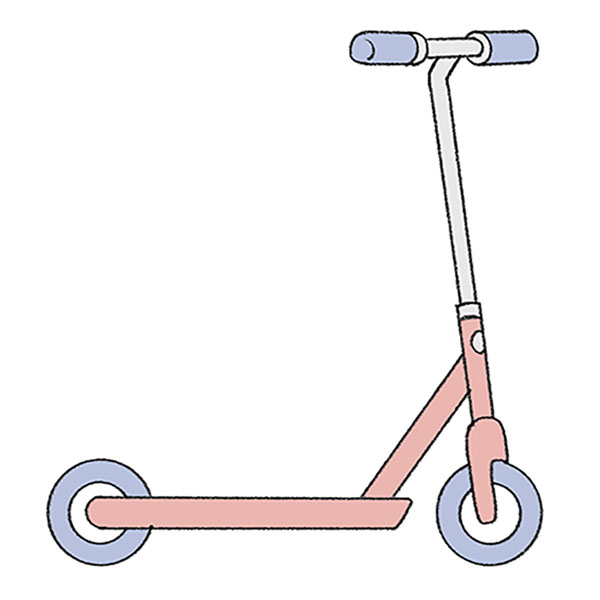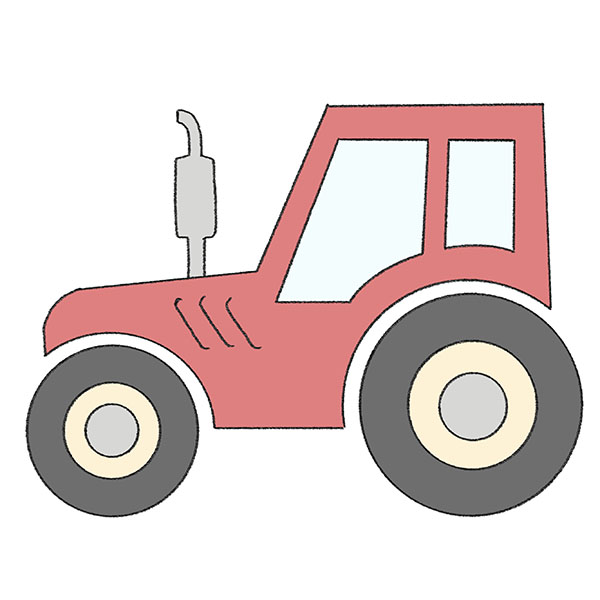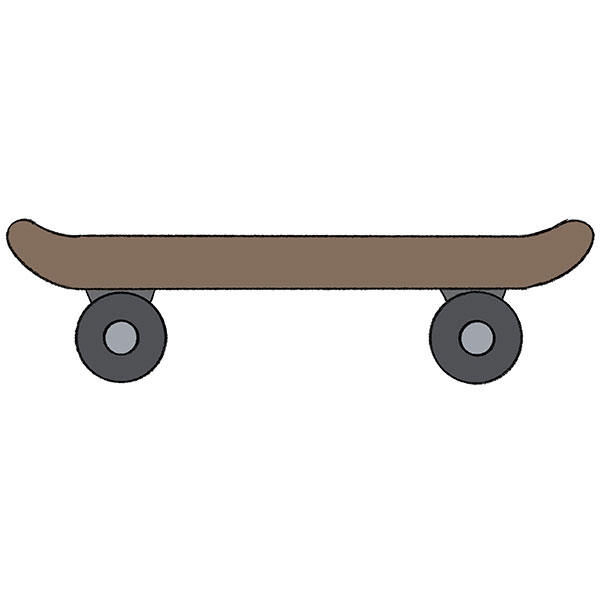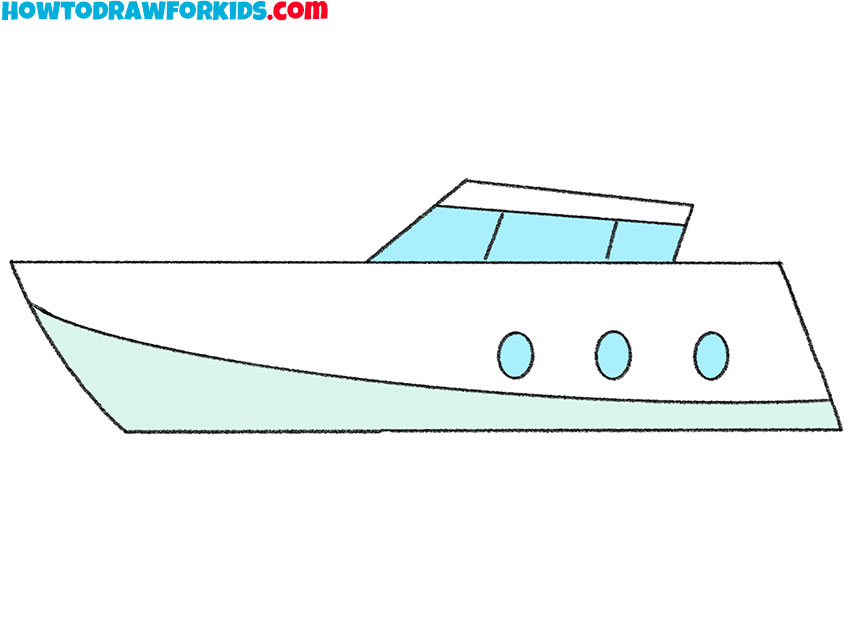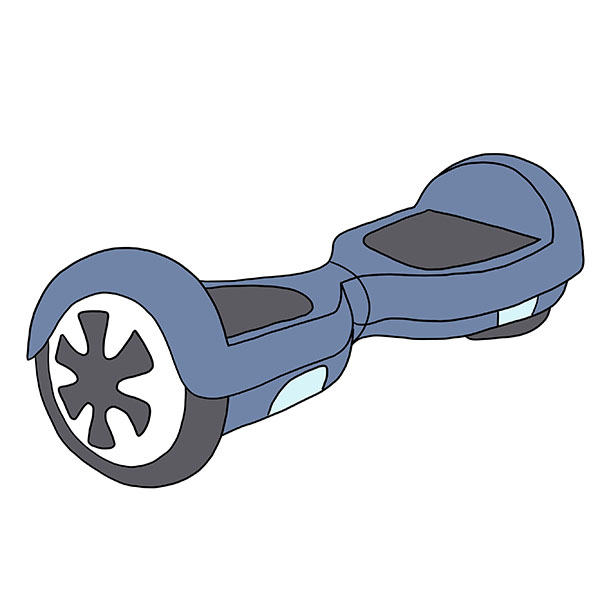How to Draw a Tank Truck
Set your gears in motion as we embark on a step-by-step guide on how to draw a tank truck, a vehicle known for its strength and size. My specially designed tutorial breaks down this symbol of industrial power into simple, approachable steps, ensuring a smooth ride for your drawing journey.
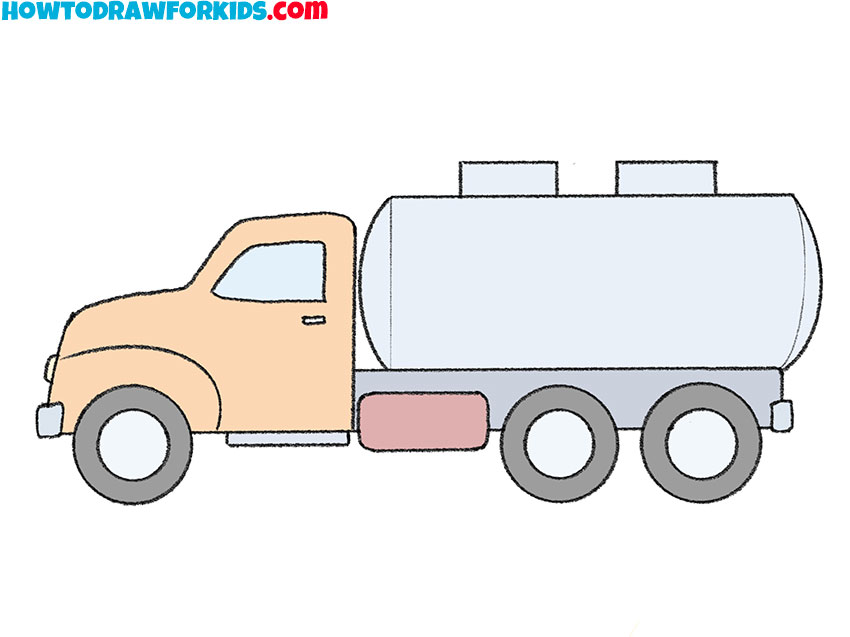
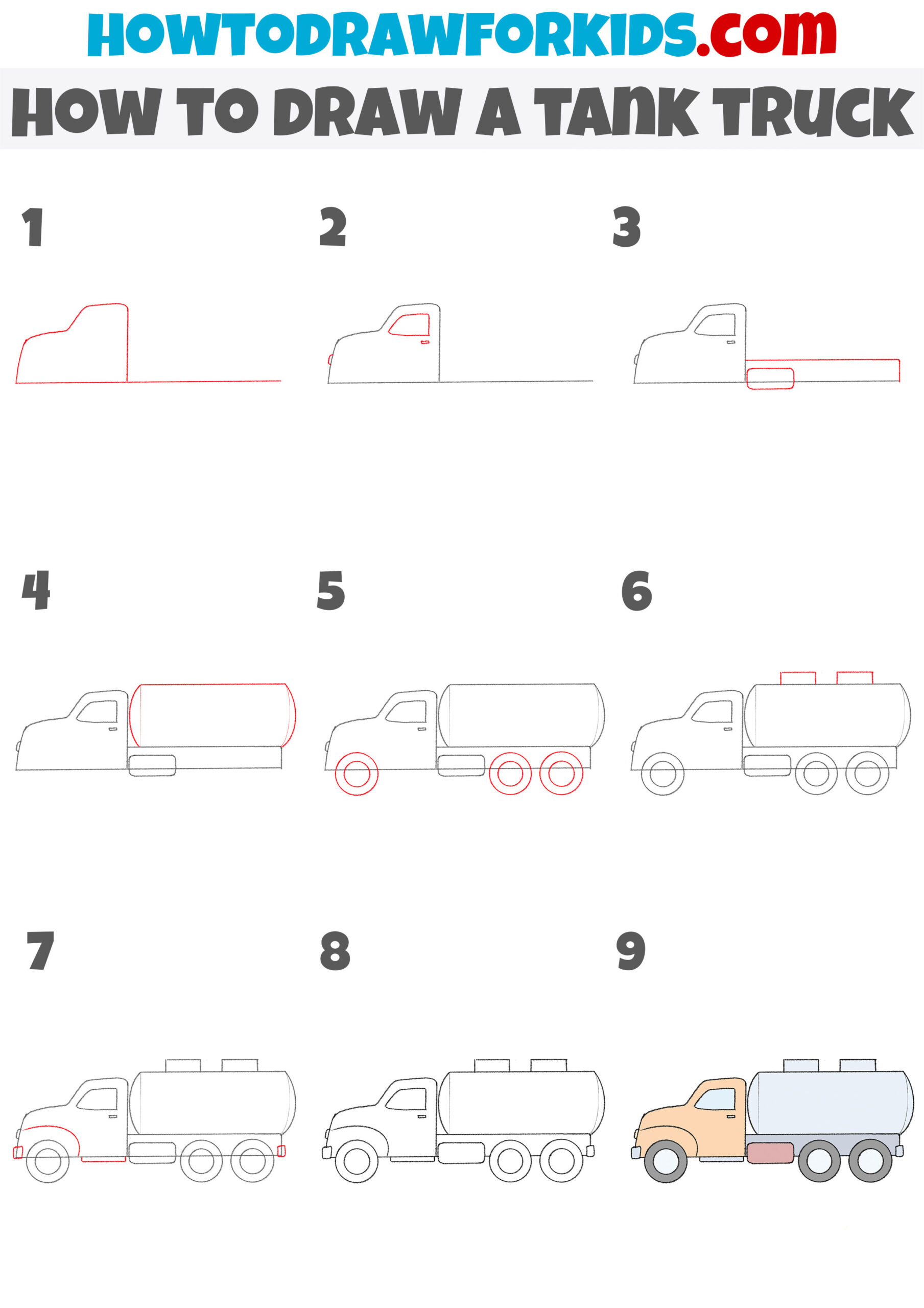
How to Draw a Tank Truck: Basic Information
Embark on a creative journey with me as we tackle the challenge of how to draw a tank truck. This lesson is a roadmap that simplifies the truck’s complex form into a series of straightforward steps. Together, we’ll navigate the lines and curves to transform a daunting subject into an achievable piece of art.
I’ve designed this lesson to highlight the tank truck’s defining characteristics: the rounded tank, the sturdy cab, and the robust wheels. By breaking these components down into basic shapes, I’ll guide your pencil to build the truck piece by piece. It’s about understanding the underlying structure, then adding layers of detail.
As we reach the final touches of our tank truck drawing, you’ll realize that the process is as seamless as the road these trucks travel on. This lesson isn’t just about the final image; it’s about learning to draw a tank truck with a method that instills confidence and paves the way for more complex projects in your artistic journey.
Tank Truck Drawing Tutorial
Materials
- Pencil
- Paper
- Eraser
- Coloring supplies
Time needed: 30 minutes
How to Draw a Tank Truck
- Draw the cockpit of the truck.
Depict two straight, perpendicular lines and also add one curved line.

- Add the window, door handle and headlight.
To complete this step, draw a small rectangle as well as some curved lines.
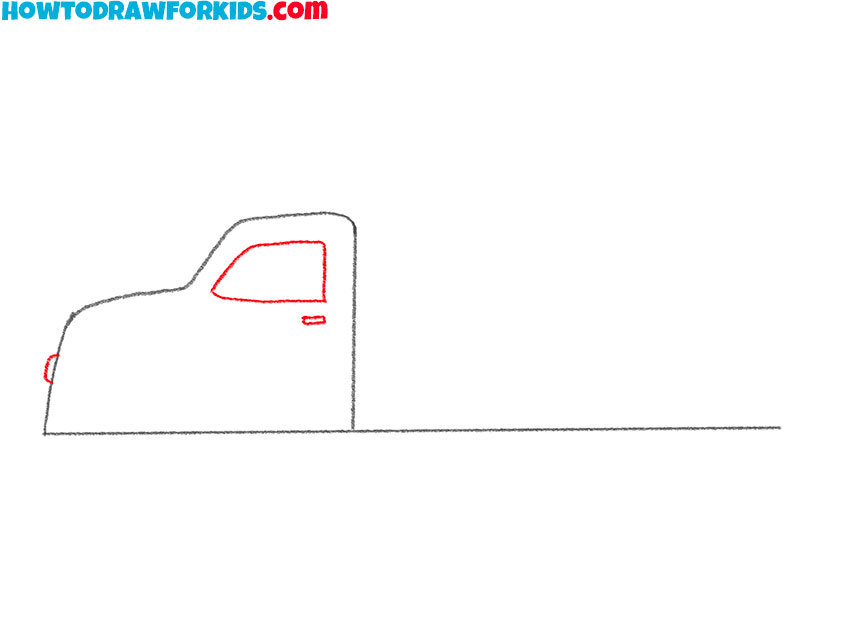
- Depict the back of the truck.
Add horizontal and vertical lines of different lengths, add a shape similar to a rectangle.
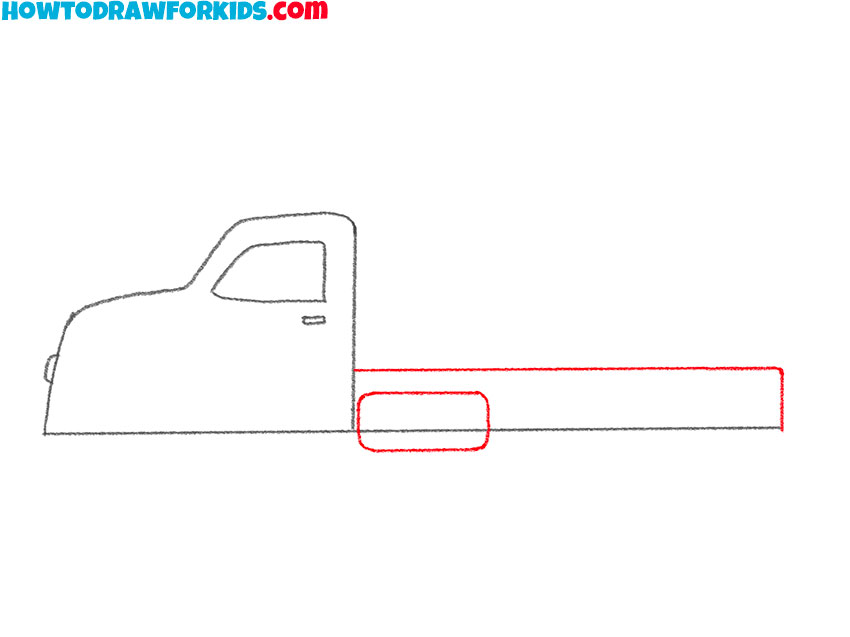
- Sketch out the outline of the tank.
Draw two arcs, one straight horizontal line, and a thin straight line and a curved line.

- Add the wheels of the tank truck.
At the bottom of the truck, add three wheels using large and small diameter circles.
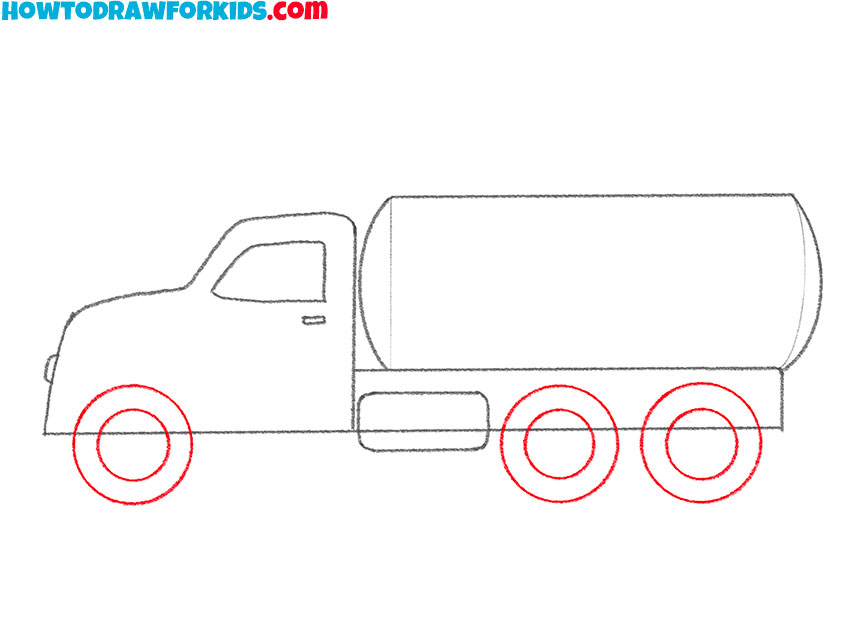
- Draw elements of the tank.
At the top of the cistern, draw two shapes that look like rectangles without bottom edges.
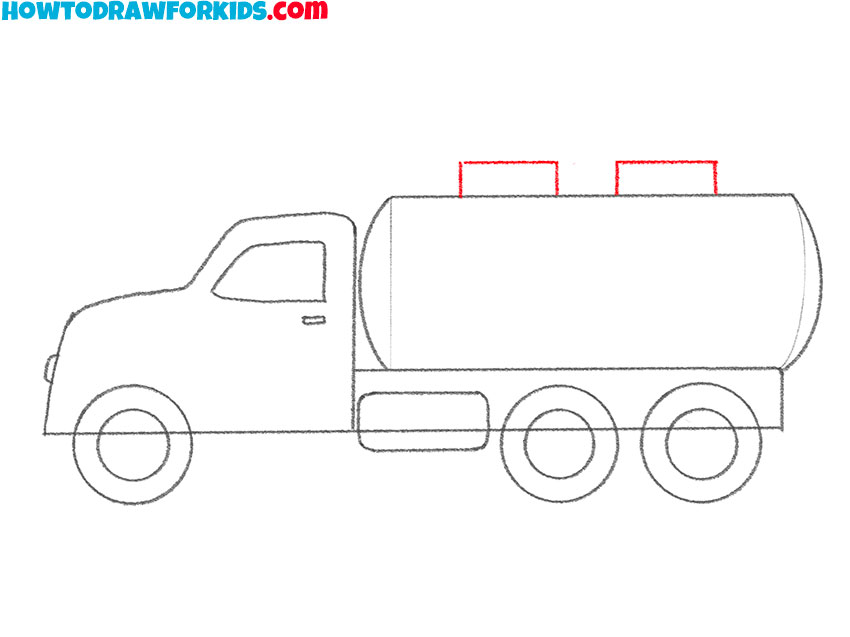
- Add details.
Depict some straight and curved lines as shown.

- Correct inaccuracies.
Use the eraser to remove any unnecessary guidelines.
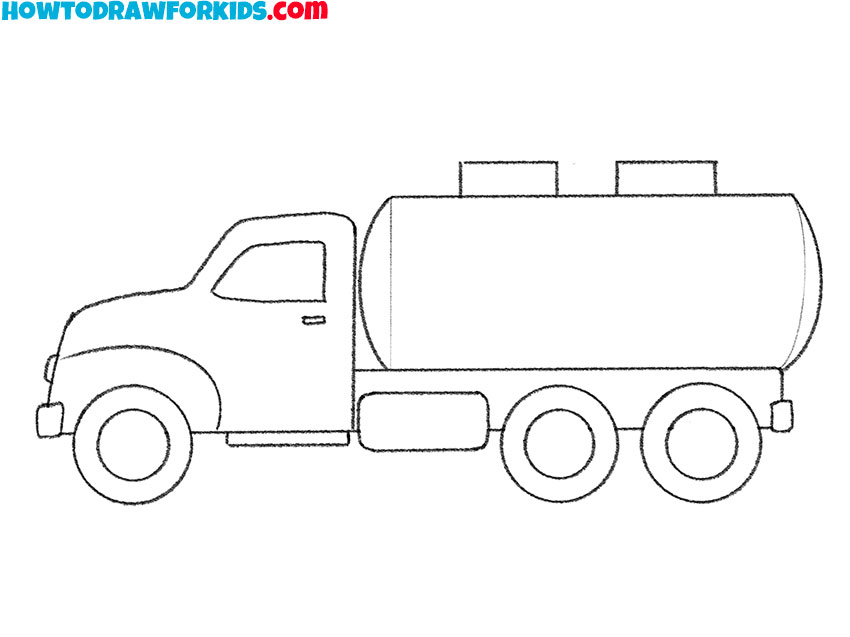
- Color the drawing.
Use orange, burgundy, gray, and shades of blue to color the tank truck.

Additional Content
In addition to this engaging tutorial, I’ve compiled a free PDF file to further support your learning. It’s a condensed version of the lesson that you can download to your device and access anytime, internet connection or not. This handy guide is filled with material to practice and perfect your skills, long after you’ve completed the main drawing steps.
This PDF is packed with additional exercises tailored to build upon what you’ve learned, challenging you to refine your technique and add depth to your drawings. Imagine this PDF as your personal sketchbook companion, there to inspire you to push the boundaries of what you can create with a pencil and paper.
Use it to explore new textures and details that can turn a simple drawing into a work of art. It’s an artist’s toolkit, designed to keep your skills sharp and your creativity flowing.
Alternative Drawing Techniques
Broadening your artistic repertoire, I’ve tailored an additional, simpler method for sketching a tank truck. This alternative route pares down the complexities, focusing on broad strokes and primary shapes. It’s a method aimed at reinforcing the fundamentals and infusing your practice sessions with efficiency and clarity.
As we delve into this streamlined process, you’ll concentrate on capturing the tank truck’s basic silhouette. By stripping the subject down to its core components, you’re invited to engage with the very essence of its design. This exercise is key to developing a solid understanding of form and volume in your artwork.
Utilize this simplified approach as a stepping stone towards more advanced techniques. It’s a way to trace the path of progress in your artistic journey, ensuring that with every tank truck you draw, you fortify your skills and grow more adept at translating the complex world around you into compelling artwork.
Tank Truck Drawing Tutorial for Kindergarten
Introducing a fun and accessible way for our kindergarten artists to draw a tank truck in just five simple steps. We start with the base and the cab, drawing straight lines and rectangles, teaching the little ones how to combine shapes to create something new. This first step is like building a playhouse with blocks, laying the foundation that makes everything else possible.
Next, we add a big oval for the tank, nestled between the cab and the end of the truck, which will help children understand the concept of size and placement. This shape is a playground for their imagination, a space where a simple oval becomes a container for whatever they dream up.
With the basic shapes in place, we introduce the wheels with circles, perfect for practicing round shapes. The addition of details to the cab in the fourth step brings personality to the truck. Finally, a splash of color turns their drawing from a collection of shapes into a vibrant tank truck, ready for any adventure they can imagine.

Polishing Your Tank Truck Drawings
In the wake of our artistic journey to draw a tank truck, let’s take a moment to reflect on how we can elevate our drawings even further. Improvement is a continuous process, and with each line we draw, we discover more about our capabilities. Here’s a list of tips to help refine your skills and bring more life to your tank truck drawings:
- Proportion Control: Pay close attention to the size relationship between the tank, the cab, and the wheels to maintain a realistic look.
- Detailing the Wheels: Spend extra time perfecting the circles for the wheels, ensuring they are round and evenly spaced.
- Shading Techniques: Experiment with light and shadow to give your tank truck depth and a three-dimensional appearance.
- Texture Exploration: Practice adding different textures to the truck’s body to simulate metal, rust, or dirt for a more authentic feel.
- Perspective Play: Try drawing the tank truck from various angles to better understand perspective and dimension.
- Line Variation: Use different line weights to highlight certain parts of the truck, like the edges of the tank or the underside of the truck.
- Color Blending: When coloring, blend shades to create gradients and highlight the curvature of the tank and the cab.
- Background Addition: Place your tank truck in different settings, like a cityscape or a rural road, to practice context and environment.
That every drawing is a step on the path to becoming a better artist. Keep these pointers in mind as you continue to sketch and color, and watch as your tank trucks evolve from simple drawings to detailed masterpieces. Each time you put pencil to paper, you have the opportunity to grow, to improve, and to create something truly spectacular.
Conclusion
Now that we’ve parked our pencils and admired our tank truck creations, the artistic road ahead is wide open. Venture over to my website, where a plethora of lessons awaits – from the serene strokes needed for drawing a pond to the comforting contours of a coffee mug. Each tutorial is a new canvas, ready for your unique touch.
And for those who thirst for more than just a sip of artistry, make sure to connect with me on social media. It’s the place to be for the latest buzz on upcoming lessons. Have a vision for what you’d like to draw next? Drop a comment under the lesson; your creative cravings will help shape our next artistic feast.

